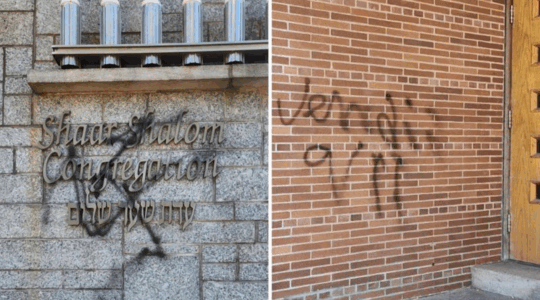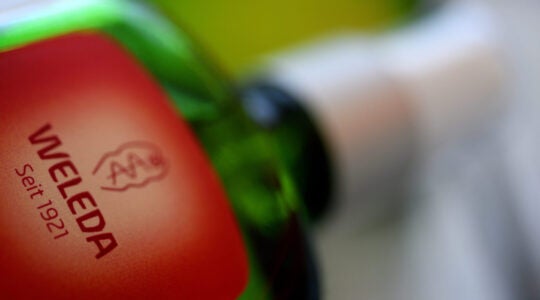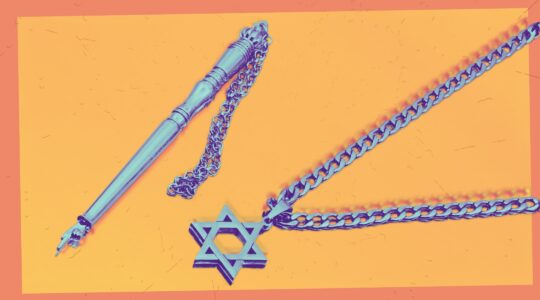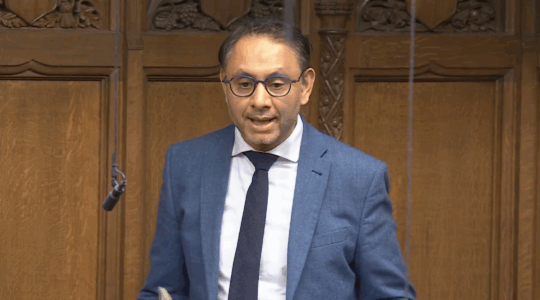KINGSTON, Jamaica (JTA) — Abraham Cohen Henriques, a Jewish merchant from Amsterdam, arrived in Jamaica in 1670 on a mission to find the hidden treasure of Christopher Columbus.
Acting on a tip handed down to him by a forcibly converted Jew, he scoured the thick vegetation of the island’s interior searching for the great explorer’s secret stash.
By most accounts Henriques turned up empty handed, but he liked the place Columbus dubbed the “fairest isle” so much that he kept coming back.
More than three centuries later, the Henriqueses are still here.
Ainsley Henriques, the leader of Jamaica’s tiny Jewish community and a distant relative of Abraham the treasure seeker, is now on his own mission here: Instead of looking for a treasure, he is its guardian.
For the past 30 years Henriques, who is in his 70s, has worked tirelessly to preserve the rich history and traditions of Jamaica’s unique Jewish community.
“I restructured the congregation, established an office, employed staff and persuaded the community to open a museum,” Henriques tells JTA. “We have hundreds of school children coming in to the synagogue every week to learn about the community.”
Henriques teamed up with the Jamaican government to host an academic conference last week in Kingston on the history of the island’s Jewish community. Participants came from around the world.
But Henriques harbors few illusions: He knows his may be a losing battle.
In his lifetime, he has seen the community here shrink slowly but steadily in a process that began long before he was born. From a peak of 2,535 Jews in 1881, only 450 were left in 1974. Today the community numbers about 200. There hasn’t been a regular rabbi here for 30 years.
Jamaican Jews are a subspecies of their own. A significant minority are black, the descendants of intermarriages or relationships between Jewish plantation owners and their slaves. They speak in the same unmistakable accent for which the island is famous. And like most Jamaicans — but perhaps unlike most Jews — they are laid back.
In downtown Kingston on Friday nights, prayers can be heard coming from the beautiful Sharei Shalom Synagogue-United Congregation of Israelites, the only remaining shul on the island. Prayers are read in English, Hebrew and Spanish — a reminder of the community’s Sephardic origins.
Built in 1908 on the spot of a previous synagogue destroyed by an earthquake, the two-storied shul is one of only four synagogues in the world with a sand floor, locals say.
“There are four main reasons why the floor is covered in sand,” Henriques explains as he stands on the bimah. “First, to remind us that we are desert people. Second, that we may be as many as the grains of sand. Third, because it muffled the steps of our ancestors who worshiped in secret. And four — and perhaps the most important reason — the kids love it.”
Hundreds of years of relative isolation have had an effect on local Jewish practice.
Alon Gildoni, a former emissary from the Jewish Agency for Israel, became intimately acquainted with the community during his time here from 2006 to 2008. One of his goals was to reintroduce some Jewish customs that had been forgotten. On Sukkot, Gildoni recalls, the community was in the habit of using oranges as one of their Four Species in lieu of an etrog, the lemon-like citrus fruit stipulated by Jewish law.
“This, however, does not necessarily represent ignorance on the part of Jamaica’s Jews,” Gildoni says. “In an impossible situation, they found answers. The fact that they survived until today is against all odds, and I credit part of that to the motivation of those who fought for so long against being forcibly converted.”
Five etrog seedlings are now growing in the fecund ground of one community member’s garden.
While Jews here are happy to learn from their coreligionists from abroad, they are proud as well of their own customs. An attempt to segregate services by gender, for example, was roundly rejected.
Jewish Jamaicans trace their origins to the first Europeans to land on the island, many of whom were Marranos — Jews who were forced to convert to Christianity but secretly practiced Judaism. When the island was taken over by the English in the late 17th century, a new wave of Portuguese Jews from Amsterdam came, including Abraham Cohen Henriques. They were merchants and plantation owners primarily, but some profited from the slave trade and state-sponsored theft on the high seas.
Small as it was, the community made its mark on the island. Jamaica’s Jews have been representatives in the local parliament, and Jews started the island’s biggest newspaper, the Gleaner.
Perched on the foothills of the Green Mountains overlooking Kingston, the Hillel Academy is a shining example of the Jewish community’s contribution to Jamaica. Opened in 1969 in the house of the local rabbi, the school is meant for island residents, not Jewish instruction.
“The school is considered a gift by the Jewish community to the people of the island in the spirit of Rabbi Hillel’s teachings,” a teacher explains during a tour of the sprawling campus.
Today the school has several hundred students, only a handful of whom are Jewish. While the school has some Jewish themes — a non-Jewish student whose family is from India wears a badge identifying himself as a member of the Masada club — Jews who want to learn about Judaism must do so outside of regular classes.
Assimilation has taken a toll on Jamaican Jewry. The telephone directory lists thousands of Levys, Cohens and Gabays, but very few of them identify as Jews, according to community members.
A few Jamaicans are rediscovering their Jewish heritage.
Patrique Mudhay, a tall, black man clad in a colorful shirt decorated with Jewish symbols, is a regular at the synagogue. He recalls being told of his Jewish background by his grandmother, who converted to Catholicism when she married.
“Although I don’t speak or read Hebrew, I have to have people who know Hebrew read the Torah,” the kipah-wearing Mudhay says. “I will not let others tamper with my religion.”
But people like Mudhay are exceptions; emigration and assimilation are the norm for Jews here.
“This is not a community that will hold on the handle of its history,” Henriques says.
Hoping to stem the tide, Henriques wants to draw Jewish tourists to the island’s synagogue and old cemeteries, perhaps as part of a cruise that will include other islands with Jewish history, such as Barbados. But he seems largely to have accepted that the community eventually will vanish — by his estimation within 30 years.
“The future for communities like this are limited,” Henriques says.
“Who will be the last Jew? I don’t know,” he says. “But my hope is that the evidence of the congregation will not disappear.”
(JTA correspondent Gil Shefler was a guest in Jamaica of the Jamaica Tourist Board.)
JTA has documented Jewish history in real-time for over a century. Keep our journalism strong by joining us in supporting independent, award-winning reporting.





